
伤口世界
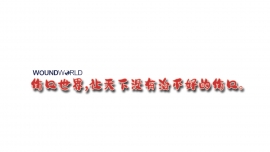
- 星期二, 27 8月 2024
eIF5A hypusination, boosted by dietary spermidine, protects from premature brain aging and mitochondrial dysfunction

SUMMARY
Mitochondrial function declines during brain aging and is suspected to play a key role in age-induced cognitive decline and neurodegeneration. Supplementing levels of spermidine, a body-endogenousmetabolite, has been shown to promote mitochondrial respiration and delay aspects of brain aging. Spermidine serves as the aminobutyl group donor for the synthesis of hypusine (Nε -[4-amino-2-hydroxybutyl]-lysine) at a specific lysine residue of the eukaryotic translation initiation factor 5A (eIF5A). Here, we show that in the Drosophila brain, hypusinated eIF5A levels decline with age but can be boosted by dietary spermidine. Several genetic regimes of attenuating eIF5A hypusination all similarly affect brain mitochondrial respiration resembling age-typical mitochondrial decay and also provoke a premature aging of locomotion and memory formation in adult Drosophilae. eIF5A hypusination, conserved through all eukaryotes as an obviously critical effector of spermidine, might thus be an important diagnostic and therapeutic avenue in aspects of brain aging provoked by mitochondrial decline.
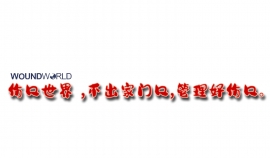
- 星期一, 26 8月 2024
Telomeres: history, health, and hallmarks of aging
Deepavali Chakravarti,1 Kyle A. LaBella,1 and Ronald A. DePinho1,*
1Department of Cancer Biology, The University of Texas MD Anderson Cancer Center, Houston, TX 77030, USA
*Correspondence: 该Email地址已收到反垃圾邮件插件保护。要显示它您需要在浏览器中启用JavaScript。
https://doi.org/10.1016/j.cell.2020.12.028
SUMMARY
The escalating social and economic burden of an aging world population has placed aging research at center stage. The hallmarks of aging comprise diverse molecular mechanisms and cellular systems that are interrelated and act in concert to drive the aging process. Here, through the lens of telomere biology, we examine how telomere dysfunction may amplify or drive molecular biological processes underlying each hallmark of aging and contribute to development of age-related diseases such as neurodegeneration and cancer. The intimate link of telomeres to aging hallmarks informs preventive and therapeutic interventions designed to attenuate aging itself and reduce the incidence of age-associated diseases.
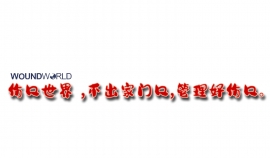
- 星期五, 23 8月 2024
Targeting the biology of ageing with mTOR inhibitors to improve immune function in older adults: phase 2b and phase 3 randomised trials
Joan B Mannick, Grace Teo, Patti Bernardo, Dean Quinn, Kerry Russell, Lloyd Klickstein, William Marshall, Sarb Shergill
Summary
Background: The COVID-19 pandemic highlights the need for therapies that improve immune function in older adults, including interferon (IFN)-induced antiviral immunity that declines with age. In a previous phase 2a trial, RTB101 (previously known as BEZ235), an oral mechanistic target of rapamycin (mTOR) inhibitor, was observed to increase IFN-induced antiviral gene expression and decrease the incidence of respiratory tract infections (RTIs) in older adults. Therefore, we aimed to investigate whether oral RTB101 upregulated IFN-induced antiviral responses and decreased the incidence of viral RTIs when given once daily for 16 weeks during winter cold and flu season.
Methods :We did a phase 2b and a phase 3 double-blind, randomised, placebo-controlled trial in adults aged at least 65 years enrolled in New Zealand, Australia, and the USA at 54 sites. In the phase 2b trial, patients were aged 65–85 years, with asthma, type 2 diabetes, chronic obstructive pulmonary disease (COPD), congestive heart failure, were current smokers, or had an emergency room or hospitalisation for an RTI within the past 12 months. In the phase 3 trial, patients were aged at least 65 years, did not have COPD, and were not current smokers. In the phase 2b trial, patients were randomly assigned to using a validated automated randomisation system to oral RTB101 5 mg, RTB101 10 mg once daily, or placebo in part 1 and RTB101 10 mg once daily, RTB101 10 mg twice daily, RTB101 10 mg plus everolimus once daily, or matching placebo in part 2. In the phase 3 trial, patients were randomly assigned to RTB101 10mg once daily or matching placebo. The phase 2b primary outcome was the incidence of laboratoryconfirmed RTIs during 16 weeks of winter cold and influenza season and the phase 3 primary outcome was the incidence of clinically symptomatic respiratory illness defined as symptoms consistent with an RTI, irrespective of whether an infection was laboratory-confirmed. Patients, investigators, and sponsor were masked to treatment assignments. All patients who received at least part of one dose of study drug were included in the primary and safety analyses. The phase 2b trial was registered with ANZCTR, ACTRN12617000468325, ClinicalTrials.gov, NCT03373903, and the phase 3 trial was registered with ANZCTR, ACTRN12619000628145.
Findings: In the phase 2b trial, we recruited 652 participants in total between May 16, 2017, and Jan 10, 2018, 179 participants to part 1 of the study (randomly assigned 1:1:1 to RTB101 5 mg once daily [61 participants], RTB101 10 mg once daily [58 participants], or matching placebo [60 participants]) and 473 patients to part 2 (randomly assigned 1:1:1:1 to RTB101 10 mg once daily [118 participants], RTB101 10 mg twice daily [120 participants], RTB101 10 mg in combination with everolimus 0·1 mg daily [115 participants] or matching placebo [120 participants]). In our first prespecified statistical analysis of the primary efficacy endpoint for part 2 of the phase 2b trial efficacy of RTB101 10 mg in combination with everolimus 0·1 mg once daily compared with placebo did not meet statistical significance but, in our second prespecified analysis, which included data from part 1 and part 2, we found a statistically significant reduction in the proportion of patients who had one or more laboratory-confirmed RTIs in the RTB101 10 mg once daily treatment group (34 [19%] of 176) compared with the pooled placebo group (50 [28%] of 180; odds ratio [OR] 0·601 [90% CI 0·391–0·922]; p=0·02). In the phase 3 trial, we enrolled 1024 patients between May 7, 2018, and July 19, 2019. 513 (50·1%) participants were randomly assigned to RTB101 10 mg once daily and 510 (49·9%) to placebo. In the full analysis set of the phase 3 trial, RTB101 did not reduce the proportion of patients with clinically symptomatic respiratory illness (134 [26%] of 511 patients in the RTB101 treatment group vs 125 [25%] 510 patients in the placebo treatment group; OR 1·07 [90% CI 0·80–1·42]; p=0·65). In both trials, significantly more IFN-induced antiviral genes were upregulated in patients treated with RTB101 as compared with placebo. The study drug was found to be safe and well-tolerated across trials and treatment groups. Only one patient in the placebo group in the phase 3 trial had serious adverse events (nausea, fatigue, hyponatraemia, and arthralgia) which were considered related to study drug treatment. Three patients died in the phase 2b trial and one in the phase 3 trial but no deaths were considered related to study treatment.
Interpretation: The combined results indicate that low doses of the mTOR inhibitor RTB101 are well tolerated and upregulate IFN-induced antiviral responses in older adults. Further refinement of clinical trial endpoints and patient populations might be required to identify whether upregulation of IFN responses by mTOR inhibitors consistently decreases the incidence or severity of viral infections in older adults.
Funding resTORbio and the National Institute on Aging.
Copyright © 2021 The Author(s). Published by Elsevier Ltd. This is an Open Access article under the CC BY-NC-ND 4.0 license.
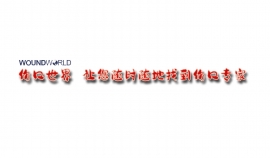
- 星期四, 22 8月 2024
Senolytics decrease senescent cells in humans: Preliminary report from a clinical trial of Dasatinib plus Quercetin in individuals with diabetic kidney disease
LaTonya J. Hickson a,b,c,1 , Larissa G.P. Langhi Prata a,1 , Shane A. Bobart c , Tamara K. Evans a,d , Nino Giorgadze a , Shahrukh K. Hashmi a,e , Sandra M. Herrmann c , Michael D. Jensen f , Qingyi Jia f , Kyra L. Jordan c , Todd A. Kellogg g , Sundeep Khosla a,f , Daniel M. Koerber a , Anthony B. Lagnado a,h , Donna K. Lawson i , Nathan K. LeBrasseur a,j,k , Lilach O. Lerman c , Kathleen M. McDonald a,l , Travis J. McKenzie g , João F. Passos a,h , Robert J. Pignolo a,b,f,i,j , Tamar Pirtskhalava a , Ishran M. Saadiq c , Kalli K. Schaefer a , Stephen C. Textor c , Stella G. Victorelli a,h , Tammie L. Volkman a,d , Ailing Xue a , Mark A. Wentworth a,l , Erin O. Wissler Gerdes a,d , Yi Zhu a , Tamara Tchkonia a, ⁎, James L. Kirkland a,b,i,m, ⁎
a Cellular Senescence and Translation and Pharmacology Programs, Robert and Arlene Kogod Center on Aging, Mayo Clinic, United States of America
b Division of Geriatric Medicine and Gerontology, Department of Medicine, Mayo Clinic, United States of America
c Division of Nephrology and Hypertension, Department of Medicine, Mayo Clinic, United States of America
d Department of Medicine Clinical Trials Unit, Department of Medicine, Mayo Clinic, United States of America
e Division of Hematology, Department of Medicine, Mayo Clinic, United States of America
f Division of Endocrinology, Department of Medicine, Mayo Clinic, United States of America
g Department of Surgery, Mayo Clinic, United States of America
h Department of Physiology and Biomedical Engineering, Mayo Clinic, United States of America
i Division of Hospital Medicine, Department of Medicine, Mayo Clinic, United States of America
j Department of Physiology, Mayo Clinic, United States of America
k Department of Physical Medicine and Rehabilitation, Mayo Clinic, United States of America
l Office of Research Regulatory Support, Mayo Clinic, United States of America
m Division of General Internal Medicine, Department of Medicine, Mayo Clinic, United States of America
article info
Article history:
Received 31 July 2019
Received in revised form 16 August 2019
Accepted 29 August 2019
Keywords:
Senolytics
Cellular senescence
Dasatinib
Quercetin
Diabetic kidney disease
Senescence-associated secretory phenotype
Corresponding authors at: Cellular Senescence Program, Robert and Arlene Kogod Center on Aging, Mayo Clinic, 200 First St., S.W., Rochester, MN 55905, United States of America.
E-mail addresses: 该Email地址已收到反垃圾邮件插件保护。要显示它您需要在浏览器中启用JavaScript。 (T. Tchkonia), 该Email地址已收到反垃圾邮件插件保护。要显示它您需要在浏览器中启用JavaScript。 (J.L. Kirkland).
1 These authors contributed equally.
https://doi.org/10.1016/j.ebiom.2019.08.069
2352-3964/© 2019 Published by Elsevier B.V. This is an open access article under the CC BY-NC-ND license (http://creativecommons.org/licenses/by-nc-nd/4.0/).
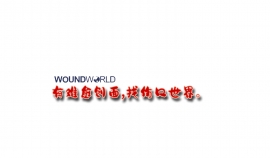
- 星期三, 21 8月 2024
Stems Cells and the Pathways to Aging and Cancer
Derrick J. Rossi,1, * Catriona H.M. Jamieson,2 and Irving L. Weissman3
1Immune Disease Institute, Harvard Stem Cell Institute, and the Department of Pathology, Harvard Medical School, Boston, MA 02115, USA
2Moores Cancer Center, Division of Hematology/Oncology and Department of Medicine, University of California, San Diego, CA 92093, USA
3Stanford Institute for Stem Cell Biology and Regenerative Medicine, Stanford University Cancer Center, and Department of Pathology,
Stanford University School of Medicine, Stanford, CA 94305-5323, USA
*Correspondence: 该Email地址已收到反垃圾邮件插件保护。要显示它您需要在浏览器中启用JavaScript。
DOI 10.1016/j.cell.2008.01.036
The aging of tissue-specific stem cell and progenitor cell compartments is believed to be central to the decline of tissue and organ integrity and function in the elderly. Here, we examine evidence linking stem cell dysfunction to the pathophysiological conditions accompanying aging, focusing on the mechanisms underlying stem cell decline and their contribution to disease pathogenesis.
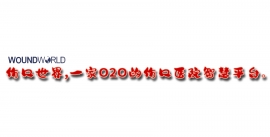
- 星期二, 20 8月 2024
Benefits of Metformin in Attenuating the Hallmarks of Aging
Ameya S. Kulkarni,1,2, * Sriram Gubbi,3 and Nir Barzilai1,2
1Institute for Aging Research, Albert Einstein College of Medicine, Bronx, New York, NY, USA
2Department of Medicine, Division of Endocrinology, Albert Einstein College of Medicine, Bronx, New York, NY, USA
3Metabolic Diseases Branch, National Institute of Diabetes and Digestive and Kidney Diseases, National Institutes of Health, Bethesda, MD, USA
*Correspondence: 该Email地址已收到反垃圾邮件插件保护。要显示它您需要在浏览器中启用JavaScript。 (A.S.K.), 该Email地址已收到反垃圾邮件插件保护。要显示它您需要在浏览器中启用JavaScript。 (N.B.)
https://doi.org/10.1016/j.cmet.2020.04.001
Biological aging involves an interplay of conserved and targetable molecular mechanisms, summarized as the hallmarks of aging. Metformin, a biguanide that combats age-related disorders and improves health span, is the first drug to be tested for its age-targeting effects in the large clinical trial—TAME (targeting aging by metformin). This review focuses on metformin’s mechanisms in attenuating hallmarks of aging and their interconnectivity, by improving nutrient sensing, enhancing autophagy and intercellular communication, protecting against macromolecular damage, delaying stem cell aging, modulating mitochondrial function, regulating transcription, and lowering telomere attrition and senescence. These characteristics make metformin an attractive gerotherapeutic to translate to human trials.
